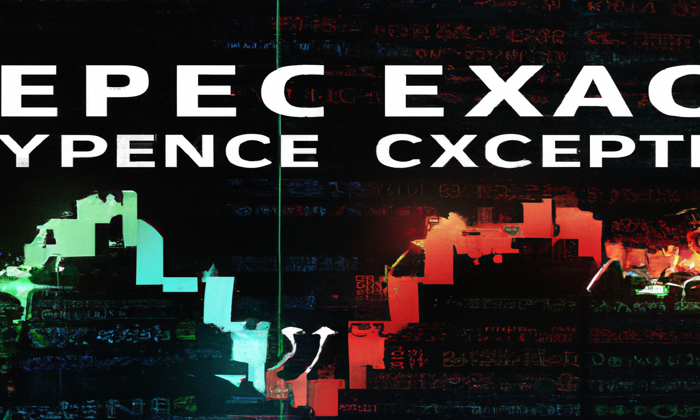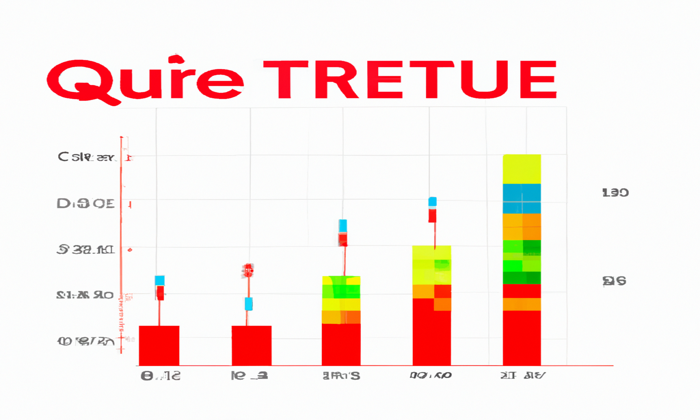The recent Sei Ecosystem Filament DEX exploit has sent shockwaves through the decentralized finance (DeFi) community, highlighting significant vulnerabilities in blockchain security. This particular hack, which occurred on April 6, 2025, led to the theft of approximately $572,000 by exploiting the decentralized exchange’s order book system. As the landscape of crypto hacks in 2025 continues to evolve, incidents like the Filament DEX hack raise concerns about the safety of user funds and the integrity of DeFi platforms. With an alarming surge in DeFi exploits, this incident underlines the urgent need for robust security measures to protect digital assets from self-liquidation exploits and manipulative trading tactics. As Filament investigates and collaborates with authorities, the ramifications of this exploit will likely resonate throughout the crypto industry, pushing for greater accountability and transparency in DeFi protocols.
In the world of decentralized finance (DeFi), the recent breach involving Sei’s Filament DEX marks a pivotal moment that warrants profound scrutiny. This incident serves as a stark reminder of the vulnerabilities that plague decentralized exchanges as they grapple with ongoing security challenges. As the DeFi space becomes increasingly rife with hacks and exploits, the attention shifts toward improving mechanisms that can safeguard deposits and enhance trading integrity. The Filament DEX exploit, characterized by the attackers’ audacious manipulation of the order book and subsequent self-liquidation, is a notable case reflecting broader trends in crypto exploits during 2025. With calls for better protective measures resonating throughout the community, the Filament incident could catalyze significant changes in how decentralized platforms manage security and user trust.
Understanding the Sei Ecosystem and Filament DEX
The Sei Ecosystem represents a powerful advancement in decentralized finance (DeFi), specifically through its Filament DEX, which is designed to enhance trading speed and efficiency on the Sei blockchain. As a decentralized exchange, Filament allows users to trade cryptocurrency assets without the need for intermediaries, bolstering trust and transparency in transactions. However, like many platforms in the rapidly evolving DeFi space, it is not immune to vulnerabilities, evidenced by the recent hack.
On April 6, 2025, Filament faced a severe exploit that leveraged the weaknesses inherent in its order book system. Such incidents underscore the pressing need for enhanced scrutiny within the Sei blockchain security framework. Despite the innovative technology that fuels these platforms, they can be exceptionally vulnerable to attacks if not properly secured. The cryptocurrency community has been alerted to these risks as exploit trends continue to evolve in 2025.
The Filament DEX Exploit: What Happened?
The Filament DEX exploit, which resulted in the loss of approximately $572,000, marks a pivotal moment in the discourse surrounding crypto hacks in 2025. Attackers conducted a series of large orders and engaged in self-liquidation across various accounts, manipulating market dynamics to their advantage. This strategic exploitation raises significant concerns over the robustness of decentralized exchange mechanisms and their security protocols.
In the wake of the exploit, Filament promptly halted all trading and withdrawals. Their immediate response signifies the importance of operational protocols in DeFi platforms when faced with security breaches. The swift action taken by the Filament team to collaborate with law enforcement and blockchain security experts demonstrates the critical steps required to trace stolen funds and mitigate further losses in the event of a hack.
Implications of DeFi Exploits for the Crypto Market
The Filament DEX hack exemplifies broader implications for the decentralized finance market, particularly in 2025, where security has become a paramount concern. The incidents reflect systemic vulnerabilities that several DeFi protocols are facing, as reported by Immunefi’s recent findings which cite over $106 million lost across various exploits this year. This surge in exploitations highlights a growing trend where attackers seem to be increasingly successful in targeting decentralized exchanges.
As the DeFi landscape evolves, it is crucial for protocols to enhance their security measures against looming threats. The community must prioritize rigorous security assessments, audits, and the adoption of recommended practices to safeguard user funds. The ongoing investigation into the Filament incident could serve as a blueprint for identifying weaknesses across other platforms and developing strategic defenses against future exploits.
Addressing Self-Liquidation Exploits in DeFi
Self-liquidation exploits have emerged as a significant threat within decentralized finance, as seen in the recent Filament DEX incident. This type of exploit occurs when attackers manipulate the market to liquidate positions in a manner that unfairly benefits them while harming legitimate users. Dr. Jan Philipp Fritsche of Oak Security highlighted the prevalent risks associated with predictable failures in trading mechanics on many DeFi platforms, urging for a reevaluation of the techniques utilized to manage liquidations.
The cryptocurrency community must come together to develop robust safeguards against such exploits. By innovating on trading mechanics and implementing AI-driven risk assessment tools, exchanges can potentially minimize their vulnerability to self-liquidation attacks. As the sector progresses towards more sophisticated security measures, it’s imperative that platforms like Filament lead the charge in establishing secure frameworks that will deter future breaches.
Response Strategies Following the Filament DEX Hack
Following the exploit, Filament’s offer of a 10% bounty to the attacker represents a novel approach to recovery strategies in the crypto space. While this tactic is not without its controversies, it highlights the challenge of reclaiming stolen assets in a decentralized environment. This situation poses a broader question for the crypto industry: how to effectively balance the interests of security with incentivizing cooperative recovery measures during a breach.
Moreover, Filament’s commitment to transparency and collaboration with authorities demonstrates an essential protocol for engagement in the aftermath of a hack. By sharing information regarding wallet addresses and collaborating with forensic teams, they aim to enhance the recovery process. This degree of proactive engagement can foster trust among users and may ultimately lead to improved security standards across all DeFi platforms.
Lessons Learned from the Filament DEX Security Breach
The Filament hack serves as a cautionary tale for decentralized exchanges regarding the importance of implementing rigorous security measures. As hacks in 2025 reflect a troubling trend, stakeholders need to extract lessons from each incident to build more resilient frameworks. Continuous learning and adaptation are essential in a rapidly changing landscape where new exploit techniques are constantly evolving.
Furthermore, the implications of such breaches extend beyond immediate financial losses, affecting user trust and the overall credibility of the DeFi sector. Thus, it is critical for exchanges to engage in regular audits and stress tests of their security systems. By prioritizing these protocols, platforms like Filament can enhance their defenses and reassure their user base of their commitment to safeguarding funds.
The Role of Community in Enhancing DeFi Security
In light of the Filament DEX exploit, the role of the crypto community in bolstering security measures becomes increasingly vital. Community members can aid in identifying vulnerabilities and stocks, transforming from passive users to active participants in the safeguarding of decentralized platforms. Initiatives that encourage users to report vulnerabilities and suggest improvements could harness collective knowledge to strengthen security postures across all DeFi protocols.
Furthermore, communities can foster a culture of transparency where platforms are held accountable for their security practices. Collaboration between users and developers aids in creating an ecosystem that prioritizes safety over profits. As seen with Filament, user engagement in safety protocols ensures that discussions about security become an integral aspect of the development process rather than an afterthought.
Navigating the Future of DeFi Security Post-Filament Hack
Looking ahead, the DeFi sector must navigate the complexities of security following the Filament DEX exploit. Crypto hacks throughout 2025 signal an urgent necessity for innovative security solutions. Exchanges, including Filament, are encouraged to work with cybersecurity firms to develop advanced protective measures tailored specifically to DeFi environments, where traditional mechanisms may fail.
Essentially, the future of decentralized finance lies in its resilience against security threats. As the market demands transparency and security, platforms must evolve, adopting new technologies, conducting thorough audits, and engaging their user base. By prioritizing these areas, the DeFi ecosystem can aspire to not only recover from incidents like the Filament hack but also emerge stronger and more secure.
Finances and User Trust Post-Hack Recovery Process
One of the most critical aspects following the Filament DEX exploit is the financial recovery process for users affected by the breach. Filament’s commitment to developing a recovery plan for assets in the COMB Pool is an essential step toward restoring user trust. Transparency about the recovery procedures, including timelines and methodologies for asset restitution, plays a pivotal role in this recovery.
Additionally, the community’s reception of such initiatives will largely determine Filament’s reputation in the long term. Users need to see tangible actions being taken to redress the losses incurred due to the hack. Successful recovery will depend not only on financial restitution but also on effective communication and engagement with affected users. Fostering a trusting relationship moving forward is essential for retaining loyalty in the DeFi ecosystem.
Frequently Asked Questions
What happened during the Sei Ecosystem Filament DEX exploit?
The Sei Ecosystem-based Filament DEX exploit occurred on April 6, 2025, when attackers executed a self-liquidation exploit, manipulating prices and stealing approximately $572,000 through the platform’s order book system. This incident highlights vulnerabilities in DeFi protocols regarding trading mechanics.
How did the attackers execute the Filament DEX hack?
The attackers executed the Filament DEX hack by placing large orders and performing self-liquidations across multiple accounts. This manipulation allowed them to extract funds effectively, leading to significant losses for users of the Sei blockchain’s Filament DEX.
What measures has Filament DEX taken after the $572K exploit?
In response to the $572K exploit, Filament DEX paused all trading and withdrawals to prevent further losses. They initiated a full investigation in collaboration with law enforcement and blockchain security experts to track the stolen funds, while also offering a 10% bounty for the return of the remaining assets.
What are the implications of the Filament DEX exploit for Sei blockchain security?
The Filament DEX exploit raises concerns about Sei blockchain security, particularly regarding the susceptibility of DeFi platforms to self-liquidation exploits. Security experts emphasize the need for improved trading mechanics to prevent such endemic vulnerabilities.
How does the Filament DEX hack compare to other crypto hacks in 2025?
The Filament DEX hack is part of a troubling trend in 2025, which has seen a record $1.64 billion stolen in the first quarter alone. With DeFi protocols losing $106.8 million across 38 incidents, the Filament exploit underscores a growing issue of security in decentralized finance.
What steps can users take to protect themselves from DeFi exploits like the one at Filament DEX?
To protect against DeFi exploits like the Filament DEX hack, users should conduct thorough research on the security measures of a platform, use decentralized wallets, enable two-factor authentication, and remain vigilant about the latest security news in the crypto space.
Is the self-liquidation exploit a rising trend in DeFi hacks?
Yes, the self-liquidation exploit appears to be a rising trend in DeFi hacks, as evidenced by incidents like the Filament DEX hack and the Hyperliquid loss. Security experts recommend that platforms enhance their defenses to mitigate this predictable vulnerability.
What is the expected resolution for victims of the Filament DEX exploit?
Filament DEX is working on a comprehensive report and a recovery process for users affected by the exploit. The platform aims to return as much of the remaining liquidity as possible to those impacted by the self-liquidation incident.
| Key Points |
|---|
| The Filament DEX on the Sei blockchain was exploited for approximately $572,000 due to self-liquidation. |
| The incident occurred between 12:00 AM and 4:00 AM UTC on April 6, 2025, where attackers manipulated prices by executing large orders. |
| Filament paused all trading and withdrawals immediately after detecting the breach to prevent further losses. |
| An investigation is ongoing, with collaboration from law enforcement and blockchain security experts. |
| Filament offered a 10% bounty of $57,000 to the exploiter if they return the stolen funds. |
| This exploit contributes to a record year for crypto hacks, with $1.64 billion stolen in Q1 2025 alone. |
| Many DeFi platforms are noted to be vulnerable to self-liquidation exploits due to flaws in their trading mechanics. |
Summary
The Sei Ecosystem Filament DEX exploit highlights the vulnerabilities that decentralized exchanges face, particularly regarding self-liquidation mechanisms that can be manipulated by attackers. The incident involved a considerable theft of $572,000 and has prompted immediate action from Filament to halt trading and initiate an investigation. As the DeFi space experiences significant challenges in security, this event underlines the importance of stronger protections against such exploits to safeguard user funds.
The recent Sei Ecosystem Filament DEX exploit has sent ripples through the decentralized finance (DeFi) community, highlighting vulnerabilities that could become increasingly common in 2025’s landscape of crypto hacks. Hackers cleverly leveraged the platform’s order book system to orchestrate a self-liquidation exploit, netting approximately $572,000 in a matter of hours. This alarming incident underscores the darker side of emerging DeFi projects, where security flaws can lead to significant losses for users and providers alike. In a year already marked by escalating DeFi exploits, the Filament DEX hack serves as a potent reminder of the need for robust Sei blockchain security measures. As the crypto market grapples with the repercussions of such attacks, discussions surrounding preventative strategies and operational reforms are more crucial than ever.
In April 2025, the decentralized exchange known as Filament, part of the Sei ecosystem, fell victim to a troubling security breach, resulting in a substantial theft that has raised eyebrows across the industry. This incident, characterized as a self-liquidation exploit, was meticulously executed, showcasing potential weaknesses in the trading mechanics of DeFi platforms. With experts predicting an uptick in DeFi exploits throughout the year, this specific Filament DEX vulnerability serves as a cautionary tale for developers and investors alike. As the crypto community seeks to understand the ramifications of this hack, the importance of establishing stringent Sei blockchain security protocols becomes increasingly evident. Moreover, the ongoing dialogue about safeguarding against such crypto hacks will shape the future of decentralized finance, compelling stakeholders to rethink their approaches to security.














